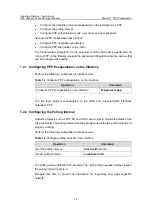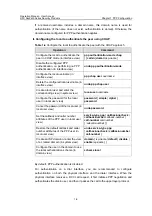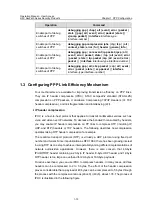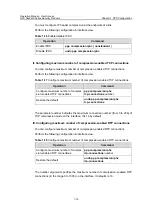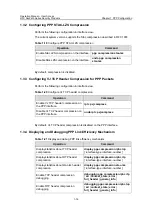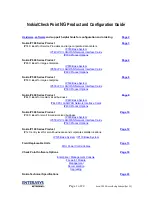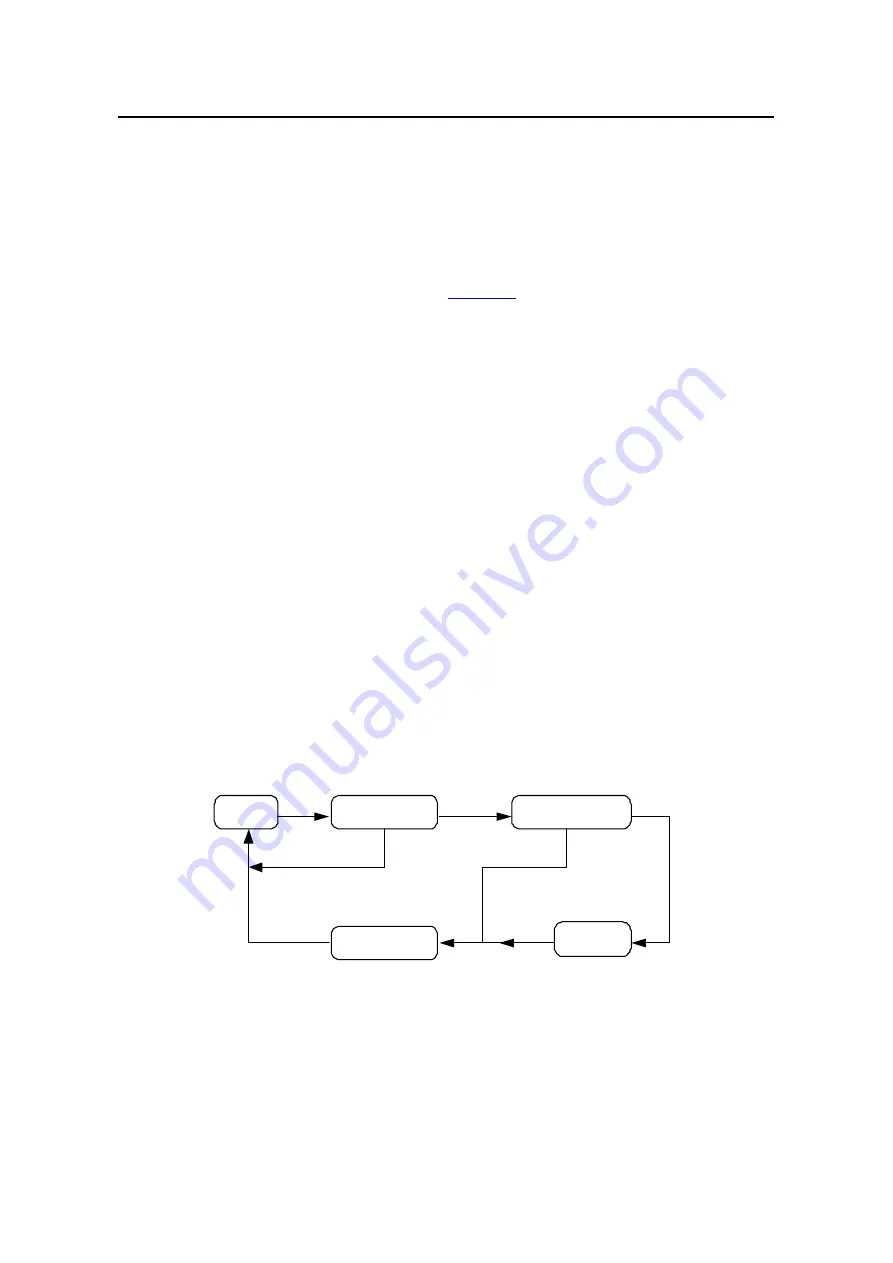
Operation Manual – User Access
H3C SecPath Series Security Products
Chapter 1 PPP Configuration
1-2
key (password) and then send the generated cipher text and its own user name
back to the authenticator (Response).
z
The authenticator encrypts the original random packet with the authenticatee
password that it has saved and the MD5 algorithm, compares the encryption result
with the received ciphertext, and returns a commensurate response (either
Acknowledge or Not Acknowledge) depending on the comparison result.
Following is how PPP operates (see
):
1)
Before setting up a PPP link, enter the Establish phase.
2)
Carry out LCP negotiation in the Establish phase, which includes the negotiation in
operating mode (SP or MP), authentication mode and MRU. If the negotiation is
successful, LCP will enter the Opened status, indicating the setup of the bottom
layer link.
3)
If the authentication (the remote verifies the local or the local verifies the remote) is
configured, it enters the Authenticate phase and starts the CHAP/PAP
authentication
4)
If the authentication fails, it will enter the Terminate phase to remove the link and
the LCP will go down. If the authentication succeeds, it will proceed to start the
network negotiation (NCP). In this case, the LCP state is still Opened, while the
state of IP control protocol (IPCP) is changed from Initial to Request.
5) NCP negotiation supports the negotiation of IPCP, which primarily refers to the
negotiation of the IP addresses of the two parties. NCP negotiation is conducted
for the purpose of selecting and configuring a network layer protocol. Only the
network layer protocol that has been agreed upon by the two parties in the NCP
negotiation can send packets over the PPP link.
6) The PPP link will remain for communications until an explicit LCP or NCP frame
close it or some external events take place (for example, the intervention of the
user).
Dead
Authenticate
Terminate
Establish
Network
UP
OPENED
FAIL
FAIL
DOWN
CLOSING
SUCCESS/NONE
rt
Figure 1-1
PPP operation flow cha
For the details of PPP, refer to RFC1661.
1.2 Configuring PPP
Fundamental PPP configuration tasks include:





